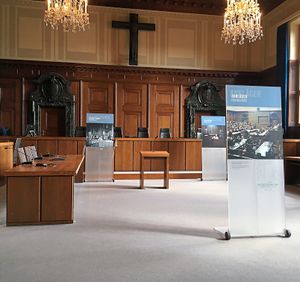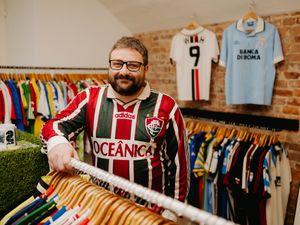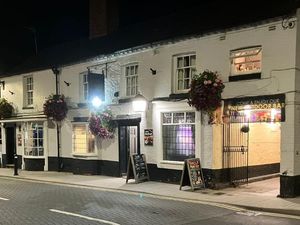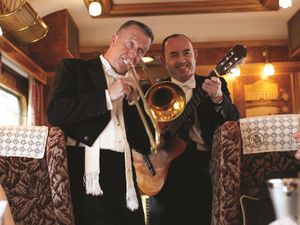Travel: Nuremberg, Germany
It’s a curious thing, reputation. Give a dog a bad name and all that. It can last for years, decades, or – most likely in Nuremberg’s case – centuries.

Indeed it’s possible that this pretty little place, often dubbed ‘the most German of German cities’, will forever be remembered for its unwitting part in European history in the 1930s.
For, in case you didn’t know, it was in this place, at the height of pre-war Nazi Germany that Adolf Hitler chose to stage some of the biggest and most startling political rallies the world has ever seen.
Nuremberg was his favourite city.
Here it was that he wanted to address the masses, indoctrinate a nation and intimidate the world.
A huge congress hall was to be built, seating 50,000 people for one speech, by one man, once a year.
It was never completed, but what remains of it stands as an eerie monument to the scale of the Nazi leader’s ambitions – and his stultifying ego.
The Kongresshalle is part of the Documentation Centre museum, a must-see for those interested in World War II.
Allow at least two hours for this collection, now used to educate visitors under the banner ‘Fascination and Terror’.
Nearby, huge rally grounds, spanning acres of land and once ringed by searchlights and Nazi regalia played host to almost 400,000 people at a time, as Germany became entranced by one of humanity’s worst dictators.
The rest, as they say, really is horrible history.

These days the Nazi gathering places echo to little more than football matches, teenagers’ Ipods and the rumble of skateboarders. Albert Speer’s monolithic architecture for the Thousand Year Reich lasted barely a few decades, although it is fair to say the foundations and remnants of his ghastly work can still be seen.
There’s enough left to draw history buffs to the site of Hitler’s gatherings and standing in the very spot where Hitler once stood does raise the hairs on the back of your neck. But the city had its own atonement, to a degree, by staging the trials of Nazi war criminals and a visit to courtroom number 600, where the likes of Speer, Hermann Goerring and Rudolf Hess faced justice is a must for history-lovers.
Still in use as a court today, an impressive museum hosts exhibits from the trial era, including one of the benches the doomed Nazis were made to sit on.
But enough of those murderous morons.
Such painful memories should not overshadow what is today a beautiful, welcoming city, packed with great bars, top restaurants and classy hotels – and only around two hours flying time from Birmingham.
And, yes, it has enough history and heritage not to be defined by its unwanted links to a Nazi past.
Today’s city, just a couple of hours flying time from Birmingham, is understandably keen to move on.
And so it should. Because in 2017 Nuremberg is undoubtedly an undiscovered gem for those keen on a city break in the heart of Europe.
At its heart, the River Pegnitz rolls past chocolate-box buildings as people go about some autumnal shopping.
Other than Bruges, it’s hard to think of a more picturesque place in Northern Europe.

Old friends chat on benches or gather beneath the hubbub of local coffee shops serving up delicious cakes and afternoon teas.
It’s a picture postcard setting, as modern buildings subtly blend with Medieval sites and churches to give a seamless sheen to this pretty place.
And there’s more good news.
BMI Regional recently began a new service to the city from Birmingham, for less than the price of a decent train ticket from Wolverhampton to London.
And it’s just in time for the wonder of the city’s world famous Christmas market, which draws thousands of people from all over the continent each year.
Nuremberg’s Albrecht Drurer airport isn’t the biggest, but the good news therefore is that collecting bags and getting away tends to be a smoother experience than in bigger cities.
The best way into town is probably via the underground and a 12-minute journey brings you out at the city’s dramatic Staatstheater built in 1903 and offering a foretaste of some of the city’s impressive architecture.
A few steps away from the theatre station is the Maritim hotel.
Perfectly positioned just a few yards from the old city walls, the Maritim offers a great base for a short stay.

Rooms are clean, functional and affordable, while the hotel’s restaurant offers a wide range of local specialities (don’t leave without trying the local sausage – it’s delicious).
Throw in a cracking little cocktail bar and super-friendly staff and it is the ideal place to start exploring the city.
Dripping in history, the best place to start is the castle, often regarded as one of Europe’s most impressive fortifications.
With twisting drawbridges and huge ramparts, the castle towers have dominated the skyline for more than 1,000 years.
The Heathen’s Tower, the Imperial Tower and the round Sinwell Tower have survived traumas including the 30 Years War and RAF bombing raids to be exceptional visitor attractions in the 21st century; perfectly presented and packed with fascinating facts.
Just outside the castle, a visit to the artist Durer’s house is highly recommended – showcasing not only his work, but the architecture of the day. Durer, painter, theorist and all-round fancy-Dan (he used hair curlers in the 1400s) is by far the city’s favourite son and his influence is everywhere. If all this history is making you hungry, a two-minute walk from Durer’s house is the excellent Hexenhäusle. (www.hexenhaeusle-nuernberg.com/)
With large open fires and plenty of cosy corners, it is a great place to take a break, try some more of those famous Nuremberg sausages and maybe, just maybe, the odd splash of the local German beer.
For those who fancy a stronger tipple, drop in on the Bräustüberl Hausbrauerei Altstadthof, where the excellent family restaurant business has evolved into a smooth – and very fine – whisky making operation. (www.hausbrauerei-altstadthof.de)
Not only will they give you a tour of their in-house distillery, but for around a thousand euros or so, they will make you your own barrel of finest German whisky, complete with personalised label.

(I wish I could tell you what it’s like, but I don’t touch the hard stuff. Those who do rated it very highly, however.)
With so much to see and do, it’s hard to pick out highlights, but one more recommendation has to be the Second World War art bunker (www.museums.nuernberg.de/world-war-art-bunker/)
Here, 24 metres beneath the castle, a unique art depot was created during the war to protect and preserve some of the most important pieces in the country.
Manned 24 hours a day to ensure humidity – and security – the bunker offers a fascinating glimpse into a world Hollywood touched on a few years ago with the film The Monuments Men.
Filmmakers have also flocked to nearby Rothenberg, just under an hour’s drive away.
A beautiful untouched medieval town, it has been the backdrop for Harry Potter and Four Musketeer films.
Just spending a couple of hours walking its historic walls is enough to see why, although the producers were also probably lured in by outstanding hotels such as the Eisenhut, where Sir Winston Churchill once stayed.
It’s also the perfect town to catch up on some festive shopping and hosts one of the best shops you’ll ever come across with Kaethe Wohlfahrt’s incredible Christmas village, which offers an experience like no other.
For the braver/darker souls, the Medieval Crime and Justice Museum is always a big hit, telling scary (but true) tales of how Germans used to mete out punishments in the Middle Ages. (Don’t miss the original Iron Maiden – and the spooky story behind it.)
In all, Nuremberg is a fine addition to the short-hop destinations from Birmingham Airport.
Packed with culture, brilliant bars and restaurants, this great city is writing its own history now.
Highly recommended.





